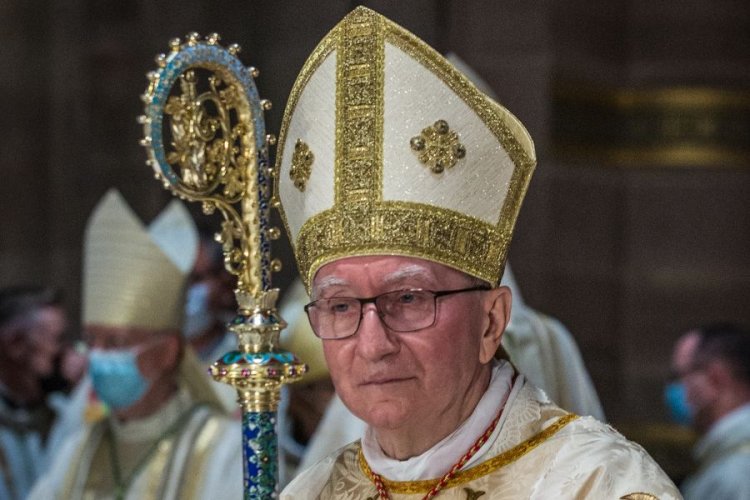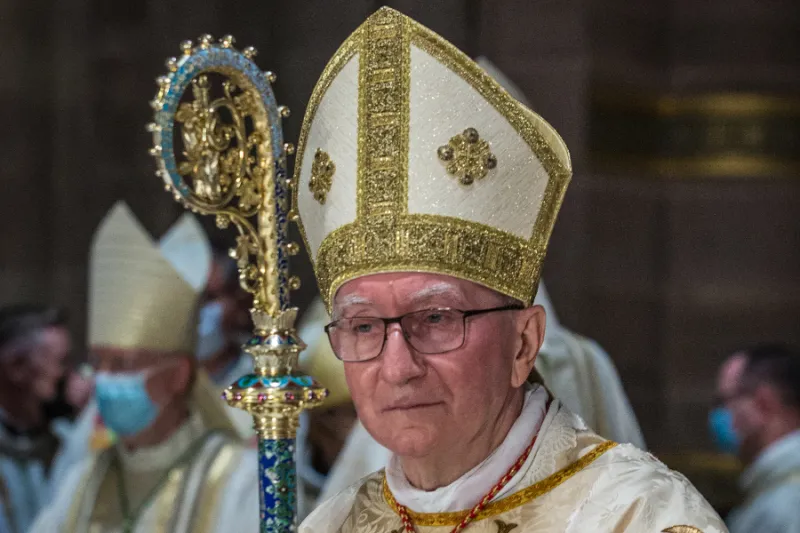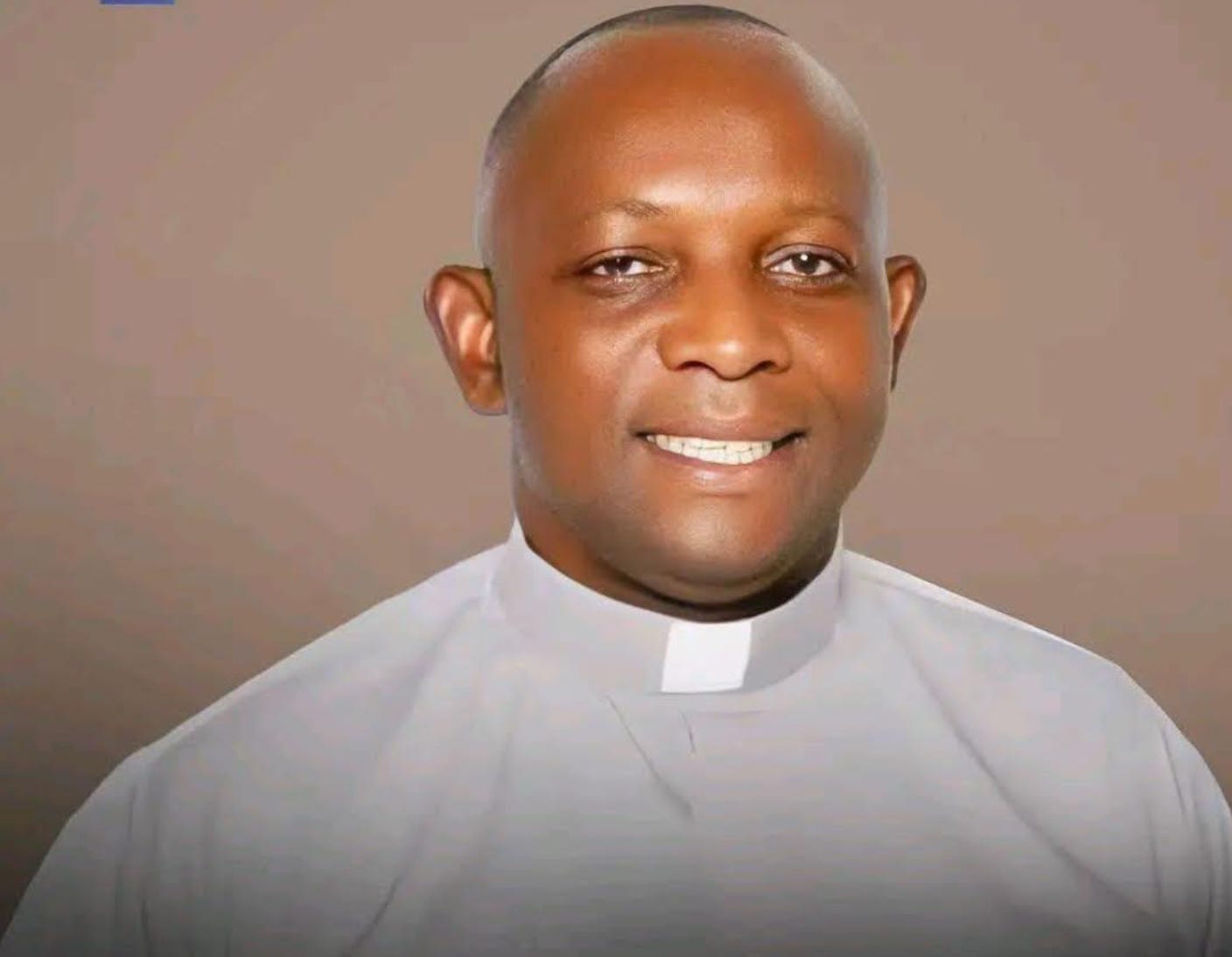How does the new Vatican constitution affect the Secretariat of State?
Cardinal Pietro Parolin. / Claude Truong-Ngoc via Wikimedia Commons (CC BY-SA 4.0). Vatican City, May 19, 2022 / 05:12 am (CNA). Speaking at a conference on reform of the Roman Curia on May 17, Cardinal Pietro Parolin outlined how the Vatican Secretariat of State will change under the new constitution Praedicate evangelium. But underlying the Vatican Secretary of State’s words was the message that the Curia’s oldest dicastery will remain central when the constitution comes into full force on June 5, the feast of Pentecost.Parolin was speaking at a “Praedicate evangelium study day” at Rome’s Pontifical Lateran University. Other speakers included Father Antonio Guerrero Alves, the prefect of the Secretariat for the Economy, and Bishop Marco Mellino, secretary of the Council of Cardinals.Each of the speakers addressed different aspects of the reform, with Parolin focusing on changes to the Vatican Secretariat of State since Pope Francis’ election.The 67-year-old cardinal, who helped to draft the new constitution as a member of the pope’s Council of Cardinals, said there had been two main changes. First, the Secretariat of State has lost its oversight of personal administrative management. This has been transferred to the Administration of the Patrimony of the Apostolic See (APSA) and is controlled by the Secretariat for the Economy.The second significant development is the creation in 2017 of the Third Section of the Secretariat of State, to manage the pope’s diplomatic representatives. The section functions alongside the two older departments: the Section for General Affairs and the Section for Relations with States. Parolin emphasized that the Third Section was formed because the pope perceived a need to “take care of what concerns the service relationship of diplomatic staff.”The cardinal noted that Praedicate evangelium asks the Secretariat of State to converge with the other departments, bodies, and offices in a dynamic of mutual collaboration. It is up to the Apostolic Signatura, the Church’s highest judicial authority, “to resolve any conflicts of competence with the other curial institutions.”But, Parolin added, “the Secretariat of State retains a particular status in law” due to its “specific task of closely assisting the Supreme Pontiff in the exercise of his mission.”From 2020, however, it was established that the Secretariat for the Economy “would perform the function of the papal secretariat for economic and financial matters.” Parolin explained that the provision “involved, on the one hand, the transfer to the Administration of the Patrimony of the Holy See of the investments and funds that had previously been entrusted to the management of the Administrative Office of the Secretariat of State and, on the other, to the configuration, as I said, of a second Papal Secretariat, exclusively dedicated to ‘economic and financial matters.’”Beyond these changes, the Secretariat of State maintains its prerogatives, and everyone is called to coordinate with it.Parolin gave various examples of this dynamic. He said that the newly formed Dicastery for Evangelization must collaborate with the Secretariat of State in “promoting religious freedom in every social sphere.”The newly titled Dicastery for Bishops, meanwhile, is “asked that when it is necessary to negotiate with governments for the modification or provision of particular Churches, it is to proceed after having consulted the Section for Relations with States.”Parolin said that the Dicastery for the Laity, Family, and Life is also called to respect the Secretariat of State’s competence in approving international associations, while the Dicastery for Promoting Christian Unity must collaborate with the Secretariat of State, “especially in relations with the Orthodox Churches.”Vatican departments responsible for the promotion of cultural heritage are also called to work with the Secretariat of State when they have to “collaborate with the representatives of civil society in the promotion of the dignity of the person or the resolution of conflicts, analyze together with civil organizations the adoption of measures for the reception of refugees and, more generally, participate in the delegations of the Holy See in intergovernmental meetings in matters falling within their competence.”Parolin highlighted how “even if some of these matters are particularly relevant to the Section for Relations with States, it will be necessary for one or the other Section — and sometimes both — to intervene according to their respective specialization to guarantee, as I say, the unity of action of the Holy See in the international sphere.”The reason for this, he said, is because “all curial institutions are an expression — according to their respective competence — of the only international entity, the Holy See, and that the international representation of this entity, and also of the Vatican City State, is entrusted to the Secretariat of State.”The cardinal underlined

 Cardinal Pietro Parolin. / Claude Truong-Ngoc via Wikimedia Commons (CC BY-SA 4.0).
Cardinal Pietro Parolin. / Claude Truong-Ngoc via Wikimedia Commons (CC BY-SA 4.0).
Vatican City, May 19, 2022 / 05:12 am (CNA).
Speaking at a conference on reform of the Roman Curia on May 17, Cardinal Pietro Parolin outlined how the Vatican Secretariat of State will change under the new constitution Praedicate evangelium.
But underlying the Vatican Secretary of State’s words was the message that the Curia’s oldest dicastery will remain central when the constitution comes into full force on June 5, the feast of Pentecost.
Parolin was speaking at a “Praedicate evangelium study day” at Rome’s Pontifical Lateran University. Other speakers included Father Antonio Guerrero Alves, the prefect of the Secretariat for the Economy, and Bishop Marco Mellino, secretary of the Council of Cardinals.
Each of the speakers addressed different aspects of the reform, with Parolin focusing on changes to the Vatican Secretariat of State since Pope Francis’ election.
The 67-year-old cardinal, who helped to draft the new constitution as a member of the pope’s Council of Cardinals, said there had been two main changes.
First, the Secretariat of State has lost its oversight of personal administrative management. This has been transferred to the Administration of the Patrimony of the Apostolic See (APSA) and is controlled by the Secretariat for the Economy.
The second significant development is the creation in 2017 of the Third Section of the Secretariat of State, to manage the pope’s diplomatic representatives. The section functions alongside the two older departments: the Section for General Affairs and the Section for Relations with States. Parolin emphasized that the Third Section was formed because the pope perceived a need to “take care of what concerns the service relationship of diplomatic staff.”
The cardinal noted that Praedicate evangelium asks the Secretariat of State to converge with the other departments, bodies, and offices in a dynamic of mutual collaboration. It is up to the Apostolic Signatura, the Church’s highest judicial authority, “to resolve any conflicts of competence with the other curial institutions.”
But, Parolin added, “the Secretariat of State retains a particular status in law” due to its “specific task of closely assisting the Supreme Pontiff in the exercise of his mission.”
From 2020, however, it was established that the Secretariat for the Economy “would perform the function of the papal secretariat for economic and financial matters.”
Parolin explained that the provision “involved, on the one hand, the transfer to the Administration of the Patrimony of the Holy See of the investments and funds that had previously been entrusted to the management of the Administrative Office of the Secretariat of State and, on the other, to the configuration, as I said, of a second Papal Secretariat, exclusively dedicated to ‘economic and financial matters.’”
Beyond these changes, the Secretariat of State maintains its prerogatives, and everyone is called to coordinate with it.
Parolin gave various examples of this dynamic. He said that the newly formed Dicastery for Evangelization must collaborate with the Secretariat of State in “promoting religious freedom in every social sphere.”
The newly titled Dicastery for Bishops, meanwhile, is “asked that when it is necessary to negotiate with governments for the modification or provision of particular Churches, it is to proceed after having consulted the Section for Relations with States.”
Parolin said that the Dicastery for the Laity, Family, and Life is also called to respect the Secretariat of State’s competence in approving international associations, while the Dicastery for Promoting Christian Unity must collaborate with the Secretariat of State, “especially in relations with the Orthodox Churches.”
Vatican departments responsible for the promotion of cultural heritage are also called to work with the Secretariat of State when they have to “collaborate with the representatives of civil society in the promotion of the dignity of the person or the resolution of conflicts, analyze together with civil organizations the adoption of measures for the reception of refugees and, more generally, participate in the delegations of the Holy See in intergovernmental meetings in matters falling within their competence.”
Parolin highlighted how “even if some of these matters are particularly relevant to the Section for Relations with States, it will be necessary for one or the other Section — and sometimes both — to intervene according to their respective specialization to guarantee, as I say, the unity of action of the Holy See in the international sphere.”
The reason for this, he said, is because “all curial institutions are an expression — according to their respective competence — of the only international entity, the Holy See, and that the international representation of this entity, and also of the Vatican City State, is entrusted to the Secretariat of State.”
The cardinal underlined that this is nothing new because the Secretariat of State is maintaining the central coordinating role it was given by Paul VI. Therefore, while recent reforms have affected its autonomy and particularities, they have also left room for renewed independence.
Information management also remains firmly in the Secretariat of State’s hands. Although the Holy See press office is now under the Dicastery of Communication, its daily bulletins are still managed by the Secretariat of State.
“The new discipline of Praedicate evangelium,” Parolin said, “establishes a situation that has been underway for some time, providing that the publication of the documents of the Holy See through the official bulletin Acta Apostolicae Sedis remains reserved to the Section for General Affairs.”
Furthermore, “this Section uses the Dicastery for Communication concerning official communications regarding both the acts of the pope and the activity of the Holy See, providing in this context precise ‘indications’ that the Dicastery will have to carry out.”
It will soon become clear whether the reform has unforeseen, far-reaching consequences or is simply a formal modification that reduces the number of Vatican departments without radically altering the Curia’s established way of doing things.














